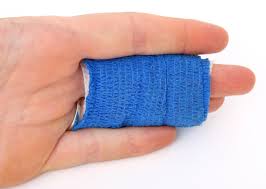Caring for a wound begins with recognizing how different injuries heal. Cuts, abrasions, surgical incisions, and chronic wounds each respond to care in specific ways. Timely and appropriate treatment supports faster healing and helps prevent infection. Effective wound care focuses on cleanliness, moisture balance, and protecting the injured area while the body repairs tissue. Recognizing how the healing process works makes it easier to respond with the right level of care and attention.
Cleaning the Wound Safely
One step in wound care is cleaning the area to remove debris and reduce bacteria. Using clean water or a saline solution can help flush out contaminants without irritating the skin. Harsh antiseptics such as hydrogen peroxide or iodine may delay healing in some cases, particularly with delicate tissue. Gently patting the area dry with sterile gauze prepares it for dressing. Thorough cleaning early on helps reduce complications that could delay healing.
Dressings play a key role in protecting the wound and maintaining the right environment for recovery. A moist wound surface supports new tissue growth and helps reduce pain. Using the appropriate dressing depends on the wound’s location, size, and level of drainage. Simple adhesive bandages may work for small cuts, while larger or deeper wounds may need specialized coverings. Changing the dressing regularly and checking for signs of infection keeps the wound on track to heal properly.
Watching for Signs of Infection
Even minor wounds may develop complications if not monitored. Redness, swelling, warmth, and increased pain can signal an infection is developing. Drainage that becomes cloudy or foul-smelling also suggests bacteria may be present. A fever or spreading redness around the site may indicate the need for medical attention. Noticing these signs early helps address problems before they progress and supports safer recovery.
Supporting Healing Long-Term
What a person eats can directly affect how a wound heals. Nutrients such as protein, zinc, and vitamin C support cell growth and repair. Staying hydrated helps deliver these nutrients to the affected tissue. For people with chronic wounds or those recovering from surgery, meeting daily nutritional needs becomes especially key. Speaking with a provider or dietitian may offer guidance on how to adjust the diet to support wound healing.
Some wounds take longer to heal due to underlying conditions such as diabetes, poor circulation, or pressure on the area. Chronic wounds require consistent monitoring and may need advanced wound care techniques. Providers may use compression therapy, debridement, or wound vac systems to promote healing. People with non-healing wounds often benefit from specialized care at wound clinics. Early referral helps avoid complications and supports better outcomes.
Keeping the wound clean is only part of effective care. Hands should be washed before and after dressing changes to prevent the spread of bacteria. If the wound is in an area prone to movement or friction, using protective padding can prevent reopening or irritation. When outdoors, keeping the wound covered protects it from dirt, bacteria, and sunlight. Avoiding excessive moisture, such as prolonged soaking in water, also reduces the risk of softening the tissue and slowing healing.
Seek Professional Wound Care
While many wounds heal at home with basic care, others require medical evaluation. Deep cuts, wounds with visible fat or muscle, puncture wounds, and injuries that won’t stop bleeding should be seen by a provider. Signs that healing has stalled or that an infection has developed also call for medical attention. Early intervention helps reduce the risk of scarring, tissue damage, and long-term complications. Understanding when to seek help supports safer and more efficient healing.









